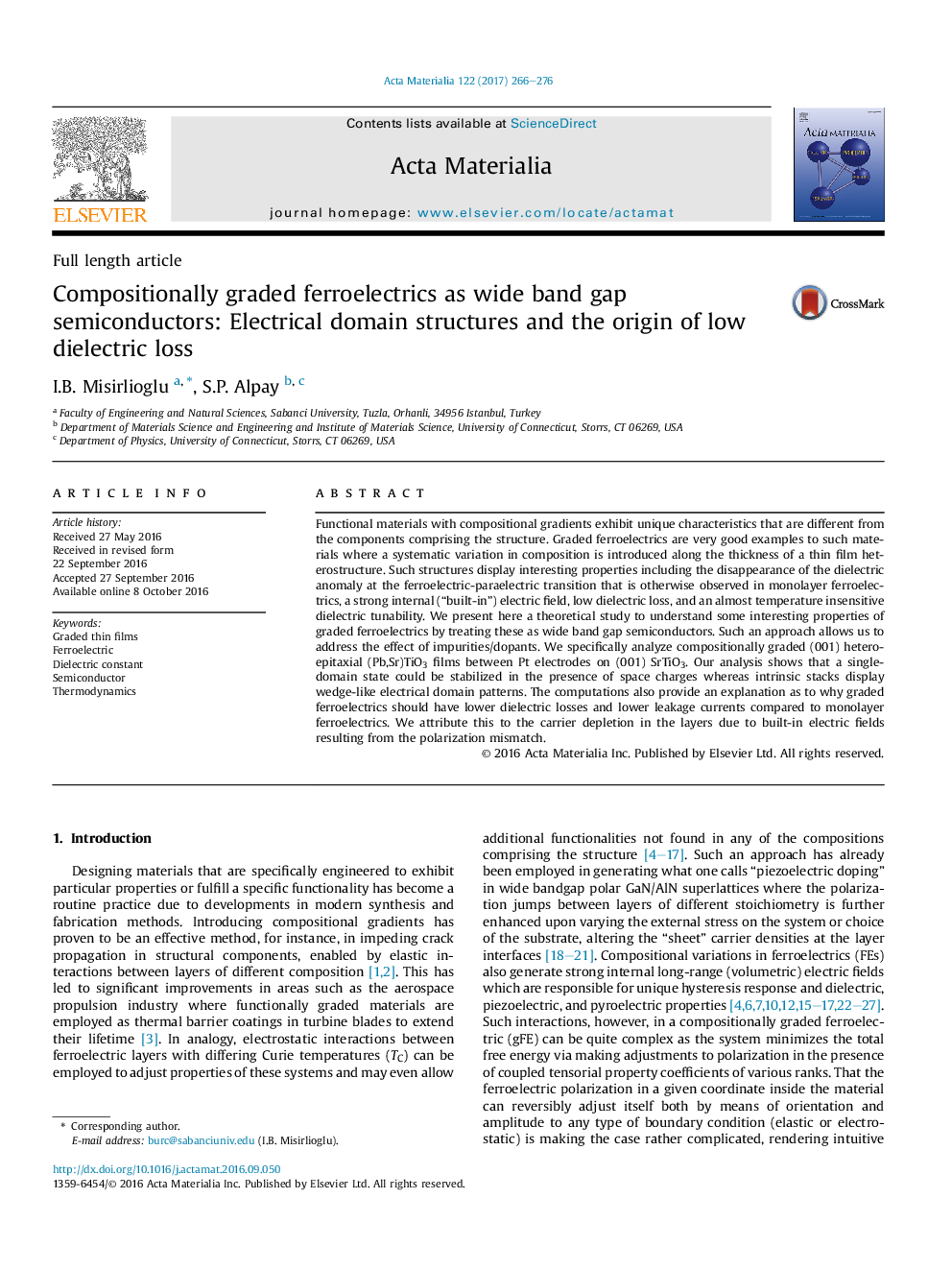| Article ID | Journal | Published Year | Pages | File Type |
|---|---|---|---|---|
| 5436512 | Acta Materialia | 2017 | 11 Pages |
Functional materials with compositional gradients exhibit unique characteristics that are different from the components comprising the structure. Graded ferroelectrics are very good examples to such materials where a systematic variation in composition is introduced along the thickness of a thin film heterostructure. Such structures display interesting properties including the disappearance of the dielectric anomaly at the ferroelectric-paraelectric transition that is otherwise observed in monolayer ferroelectrics, a strong internal (“built-in”) electric field, low dielectric loss, and an almost temperature insensitive dielectric tunability. We present here a theoretical study to understand some interesting properties of graded ferroelectrics by treating these as wide band gap semiconductors. Such an approach allows us to address the effect of impurities/dopants. We specifically analyze compositionally graded (001) heteroepitaxial (Pb,Sr)TiO3 films between Pt electrodes on (001) SrTiO3. Our analysis shows that a single-domain state could be stabilized in the presence of space charges whereas intrinsic stacks display wedge-like electrical domain patterns. The computations also provide an explanation as to why graded ferroelectrics should have lower dielectric losses and lower leakage currents compared to monolayer ferroelectrics. We attribute this to the carrier depletion in the layers due to built-in electric fields resulting from the polarization mismatch.
Graphical abstractIn this study, we analzyed graded ferroelectric stacks using thermodynamic theory and treating them as wide bandgap semiconductors. We show that a single domain state is possible above a certain density of ionzable impurities that are almost always present in these systems due to processing conditions. Despite this, we also reveal that graded stacks are fully depleted of carriers and that this could very well be the reason why such structures are reported to have low dielectric loss compared to monolayer films. We point out the diffences in the phase transition characteristics, domain structures and dielectric response of intrinsic stacks and those that contain impurities.Download high-res image (236KB)Download full-size image
